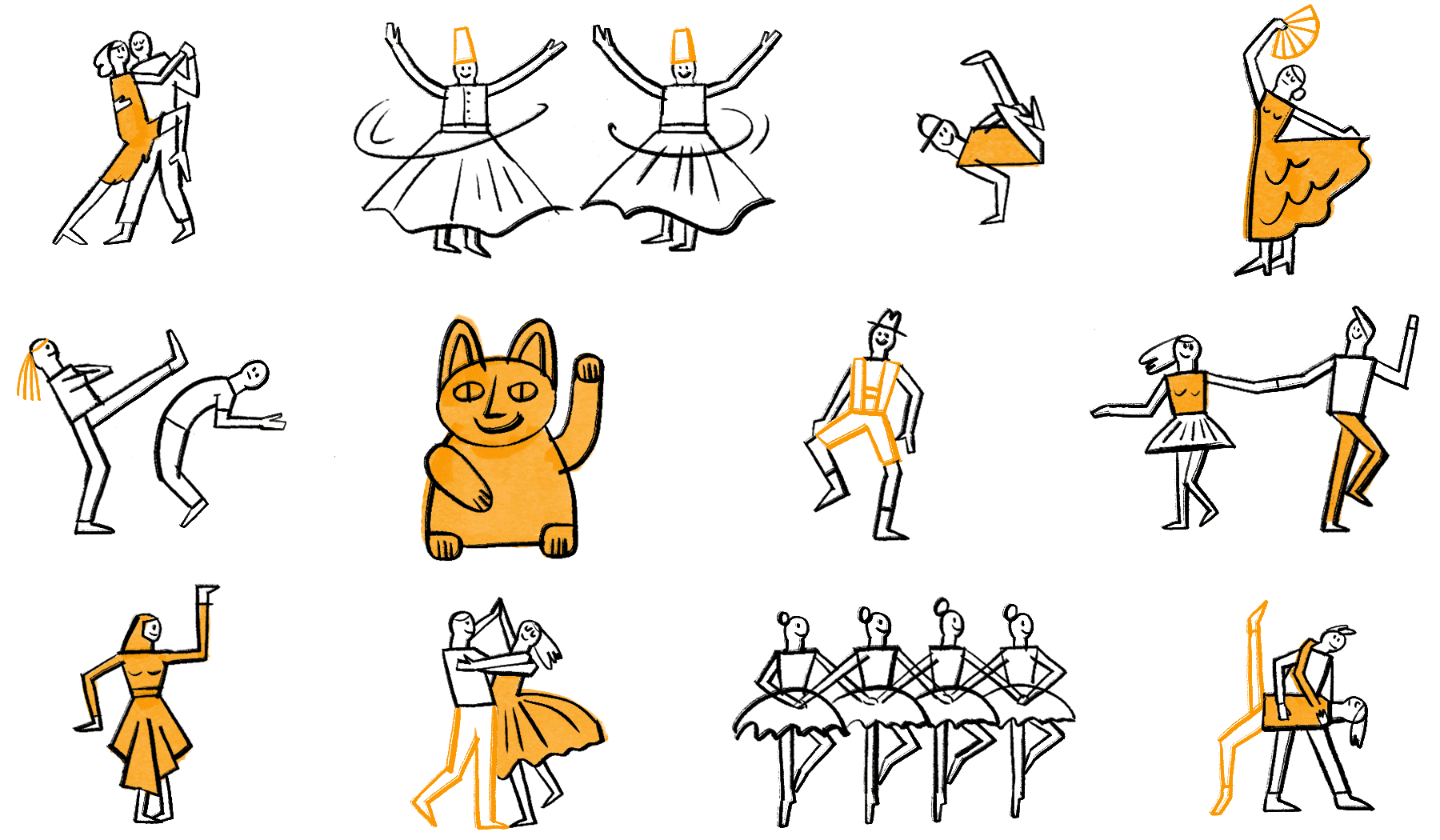Things you can do with the cards:
use them as material to explore various dances and search for overlaps, differences and historical connections to contemporary dance.
combine them with cards from other focus areas. For instance, you can take a close look at the working methods of choreographers who mix different dance cultures with one another.
You can find examples for this here:
![]() You can find ideas for developing assignments here.
You can find ideas for developing assignments here.

